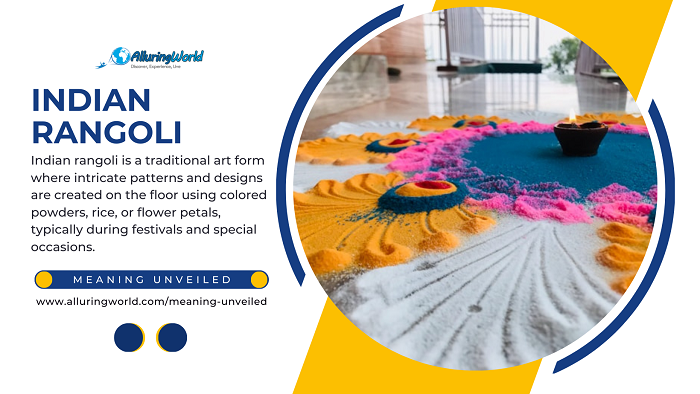Read time ca. 2 minutes
Rangoli, a traditional Indian art form, is a vibrant expression of creativity and cultural heritage which beyond its aesthetic appeal, each color used in Rangoli holds deep symbolic significance, reflecting various aspects of Indian culture, spirituality, and tradition. Let’s delve into the rich tapestry of meanings behind the colors commonly used in Indian Rangoli designs.
White:
White, often depicted using rice flour or chalk powder, symbolizes purity, tranquility, and spiritual enlightenment. In Rangoli, white is used to create intricate patterns that evoke a sense of serenity and harmony, and it represents the quest for inner peace and the purification of the mind and soul.
Red:
Red, derived from natural materials like vermillion or powdered turmeric, is associated with vitality, energy, and auspiciousness. In Indian culture, red is considered a color of celebration and joy, often used in Rangoli designs during festive occasions such as weddings, festivals, and religious ceremonies, and it symbolizes passion, love, and the vibrancy of life.
Yellow:
Yellow, obtained from materials like turmeric or marigold petals, symbolizes prosperity, fertility, and optimism. In Rangoli art, yellow is used to create intricate patterns and motifs that invoke feelings of happiness and abundance, and it represents the sun’s warmth, vitality, and the promise of a bright future.
Green:
Green, extracted from natural sources like leaves or henna, represents growth, harmony, and renewal. In Rangoli designs, green is often used to depict foliage, floral motifs, and symbols of nature’s abundance, and it symbolizes vitality, fertility, and the interconnectedness of all living beings with the natural world.
Blue:
Blue, obtained from materials like indigo or blue pigment, symbolizes tranquility, spirituality, and divine grace. In Rangoli art, blue is used sparingly to create accents and highlights, adding depth and contrast to the overall design, and it represents the vastness of the sky, the depths of the ocean, and the infinite expanse of the cosmos.
Orange:
Orange, derived from materials like saffron or orange pigment, symbolizes creativity, courage, and spiritual awakening. In Rangoli designs, orange is used to create bold and striking patterns that evoke feelings of enthusiasm and inspiration, and it represents the fire of transformation, the energy of creativity, and the pursuit of spiritual growth.
Conclusion:
In conclusion, the colors used in Indian Rangoli art are not merely decorative elements but powerful symbols that reflect the depth and richness of Indian culture and spirituality. Each color carries its own unique symbolism, evoking emotions, and conveying profound meanings, and through the vibrant palette of Rangoli, artists and enthusiasts alike celebrate the beauty of life, the interconnectedness of all beings, and the timeless wisdom embedded in Indian traditions.

